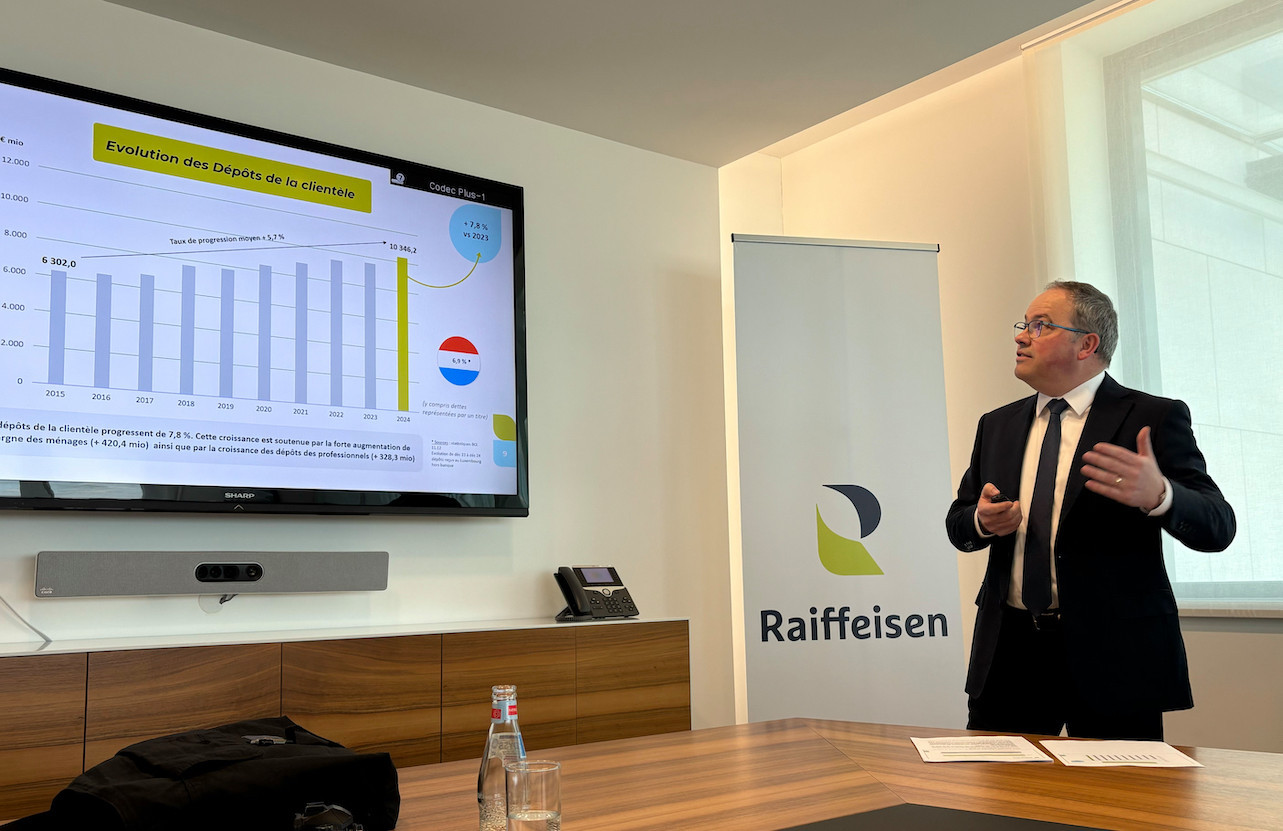In ten years, Banque Raiffeisen has become one of the last banks in the market that has no particular problem meeting journalists at least once a year, ahead of its general meeting, to share not only its annual results but also the context that goes with them, unfiltered and far from the populist rhetoric that abounds. It’s probably the result of a consistent attitude, reiterated in every press release: rigorous management, constant business development, a balanced approach.
At 99 years of age, the old cooperative bank isn’t showing off. The bank is moving forward with the certainties born of its choices. 2024 ended with a net profit of €28.1m, up 10% year-on-year; an increase in banking income of 3.6% to €245m; a 3.6% rise in operating costs linked to its desire to continue recruiting and training its 738 employees to meet the challenges of its 130,000 customers, including 54,000 members; total deposits reached €10.34bn, up by almost €750m; and a strengthening of its regulatory capital by 8.1% (+€62.5m).
“Our bank continues to demonstrate its solidity and adaptability,” comments Banque Raiffeisen’s chairman of the board, , who adds that his bank’s “vocation is not to become a savings club,” but “to seize every opportunity that arises.” “Unlike our listed colleagues, we don't run after quarterly results,” he says, slipping in his only dig at the competition.
The €750m increase in deposits--€420m from individuals and €328m from professionals--is not a good sign for the economy. It means that money is not circulating as well. “With 40 years of experience,” says Hoffmann, “I’m not surprised that deposits are increasing. That’s always been the case when the economy is doing less well. People prepare for slightly more difficult times, start saving and spend less,” he comments. And the chairman of the board immediately adds: “The bank’s objective is not to accumulate deposits, but to use them to grant credit and support the development of the economy... although demand for credit remains below the levels of previous years.”
A third business hub in Esch and an agri-hub to come
“The reference rate was still relatively high last year, so a lot of household deposits went into term deposits. Now that rates are coming down again, we hope that there will be more investments on the markets", adds chairman of the managing board .
Despite the difficulties in the property market, outstanding loans to individual customers--50% Luxembourg nationals and 50% residents, according to , member of the management board in charge of commercial policy--still rose by 2.2%, or €166m, to €7.8bn. This was especially the case from the second half of the year, whilst those to local and parastatal authorities rose by 27% last year.
The cooperative bank--which is currently deciding how to position itself in the face of Europe’s drive to mobilise the €10trn that Europeans hold in liquid savings to finance a defence effort unprecedented in the modern era--is pursuing its policy of physical expansion and going against the grain compared to other retail banks. Raiffeisen has 28 branches and one online branch, and a third business hub in Esch-sur-Alzette, . By the end of the year, De Vuyst also said that an agri-hub would be opened to offer 11 to 12% of the agricultural sector a qualified entry point for advice on these activities in great need of financing. “We really realise that some farmers need a little more support precisely in terms of this transition, whether it’s energy-related or other, or for expansion, and they need a way of working that’s a little more rigorous. So that’s why we’ve decided to join forces a bit more, to have a really dedicated team. We’ve also realised that where there used to be handshakes to seal deals, these days we have to go through more ‘administrative’ files.”
Whilst hopes of a return to “normality” in the property sector are slowly taking shape, the chairman of the board is more worried about the trend “in the unemployment rate. When people have a job and stay in their business, and they need financing solutions, we always end up finding a solution.”
This article was originally published in .
